2013-04-05 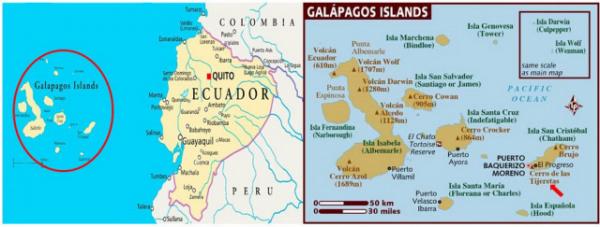
【Aiden in English】
San Cristobal Island was the easternmost island in the archipelago and one of the oldest eroded volcanoes, ascending to moist highlands nearly 2,400 feet/730 meters above sea level geologically. It was the first island Charles Darwin visited in the Galapagos in 1835. Several endemic species and subspecies of flora had evolved in San Cristobal. Still, the human impact had severely damaged much of the island; the once extensive Scalesia daisy forest had been choked out by introduced guava, and the iconic zone was now only a remnant of its former extent. In the morning, Puerto Baquerizo Moreno looked like the sleepy capital of the Galapagos Province. Artisan fishing and tour boats moored along the coast, and a large colony of playful Galapagos Sea Lions walked across the beach and on the boardwalk. Mom and I went onshore and steadily trotted through the Galapagos National Park with our naturalist to a trail on Frigatebird Hill. This hill had a rich diversity of flora and was blooming with endemic flowering plants across the vegetation zones in the Galapagos. In the coastal zone, salts, such as those found in mangrove trees and salt bushes, influence vegetation. In the arid zone, the giant saguaro and prickly pear cacti were tall enough to shield us from the blistering hot sun. In a transition zone, tall trees were replaced by low and dense bushes. Pega (Pisonia floribunda) grew abundantly, while Cacaotillo (Miconia robinsoniana) was in danger of extinction. In the humid zone, the Pawpaw tree grew predominantly up to 66 feet/20 meters tall, alongside the Guava tree. The trailing vegetation consisted of bushes, lianas, bromeliads, numerous species of ferns, orchids, mosses, liverworts, and lichens that symbiotically wove through trunks, branches, stems, and even leaves of some species. Monarch Caterpillar is caterpillarically fed on green leaves. Passion Flowers, Petunia, and Morning Glories leaned everywhere, attracting Darwin Finch to dance and San Cristobal Mockingbird to sing harmoniously. An American-made cannon stood in a vista. It had played an essential part in protecting the Panama Canal during World War II and was later taken over by the Ecuadorian Navy in the early 1970s for military exercises. A statue of Charles Darwin stood on the original site where he first disembarked in the Galapagos Islands during the voyage of the Beagle about 178 years ago. He left with "Origin of Species". After a fast-paced walk along Frigatebird Hill in the park, we entered the Interpretation Center, which traced the history back to a priest who came in 1535 and declared that the islands were cursed by God because there was no fresh water. It also exhibited the formation of the Galapagos, the variety of wildlife, the arrival and impact of man, and the importance of conservation. The displays made it the best visitor center in the Galapagos Islands. Frigatebird Hill was one of the most popular places we knew better about the natural habitat of wild flora in the Galapagos. 【红霞译】 圣克里斯托瓦尔“基督承载者”岛位于加拉帕戈斯“巨龟”群岛最东面,地质上由最老的火山持续上升至潮湿高地,海拔2,400英尺/730米,1835年查尔斯·达尔文“自由人·亲爱的朋友”首次从这里登陆加拉帕戈斯群岛。繁衍在该岛的某些特有植物种属和亚种属随生长环境不同而出现表征变异,不过人为因素给当地生态环境带来的影响更大,大片雏菊林已遭受外来引入的番石榴严重威胁,野牡丹植被带几乎濒于灭绝,发人深省。 清早,加拉帕戈斯群岛省城巴克里索·莫雷诺“牧民·黝黑”港尚未苏醒,渔船游轮摆渡仍在码头集结待命,大批贪玩的加拉帕戈斯海狮已经开始岸边活动,有的甚至爬到人行浮桥大摇大摆逛街溜弯。
我和妈妈随导游一行多人由此登陆后,便直奔加拉帕戈斯国家公园军舰鸟山,观摩丰富多样的植被生态和无以伦比的珍稀物种。 沿海地带的红树林和耐盐灌木因受海水影响而具有高盐耐受能力,干旱区的巨型仙人掌和仙人球林顶天立地,为我们遮日挡阳,全然不在话下。过渡区中高大的树木林被低矮茂密的灌木丛取代,丰花松果藤繁茂,城堡野牡丹等加拉帕戈斯群岛特有的珍稀植物却越来越少。湿润区多姿多彩:木瓜树高达66英尺/20米;番石榴树欲与天公试比高;蔓生植物由灌木、藤本、凤梨、若干蕨类、兰花、苔藓、地钱和地衣混合组成,常常与某些种属的树干、树枝,叶茎,甚至叶片共生在一起,表现得亲密无间;斑蝶毛毛虫吃素,对具有光合功能的宿主并不挑剔;西番莲、喇叭花和牵牛花娇艳夺目,“林花长似锦,四季色常新”;达尔文雀欢舞,圣克里斯托瓦尔仿声鸟歌唱,“飘飘仙袂缕黄金,相对弄清音”,军舰鸟山因为“天北天南绕路边,托根无处不延绵”而生态济济,大自然到处温馨和悦。 美国制造的榴弹炮成为军舰鸟山旅游热线上的景点之一,二战期间不仅保卫过巴拿马“多鱼之地”运河,上世纪七十年代初期又参与了厄瓜多尔“赤道”海军军事演习。 达尔文雕像矗立在伟人第一次登陆的地方,178年前达尔文乘坐比格“小猎犬”号来到加拉帕戈斯群岛,从此《物种起源》像星星之火,燎原了整个世界。 很快转完军舰鸟山之后,我们又来到公园展览中心参观,该馆上溯1535年第一位牧师来此布道,宣称因为上帝诅咒才使加拉帕戈斯群岛缺乏淡水资源;下至加拉帕戈斯群岛的由来、野生动物多样性、人类的出现及影响与加拉帕戈斯群岛自然保护的重要性,内容丰富且图文并茂,算是加拉帕戈斯群岛背景介绍最全面的游客服务部。 “远芳侵古道晴翠接荒城”,军舰鸟山是我们了解加拉帕戈斯群岛野生植被生态最佳去处之一。 Today in History(历史上的今天): 2013: Kicker Rock/Witch Hill, Ecuador(厄瓜多尔睡狮岩女巫岭) 2012: 三年级春假(3rd Grade Spring Break)
2011: 埃及纸莎草纸画(Papyrus Painting, Egypt) 2011: 埃及孟斐斯和萨卡拉(Memphis & Saqqara, Egypt) 2011: 埃及吉萨金字塔(Giza Necropolis, Egypt) 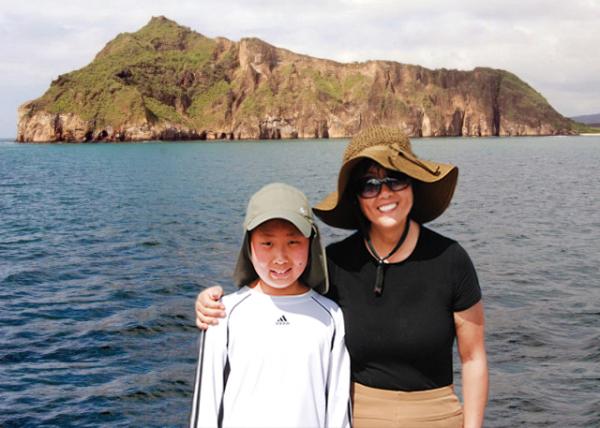 San Cristóbal Island, the Oldest Permanent Settlement in the Galápagos San Cristóbal Island, the Oldest Permanent Settlement in the Galápagos
(圣克里斯托瓦尔岛·加拉帕戈斯群岛最古老的永久定居点 04-05-2013) 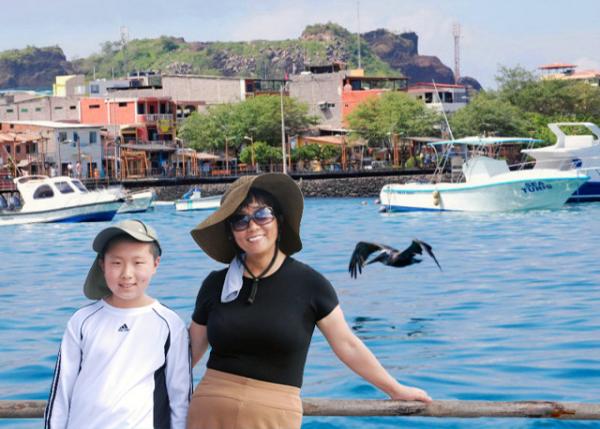 Puerto Baquerizo Moreno, the Administrative Center of the Galapagos Province Puerto Baquerizo Moreno, the Administrative Center of the Galapagos Province
(巴克里索·莫雷诺港——加拉帕戈斯省的行政中心 04-05-2013)  A Seal, Basking on the Dockyard (海狮躺在船坞上) A Seal, Basking on the Dockyard (海狮躺在船坞上)
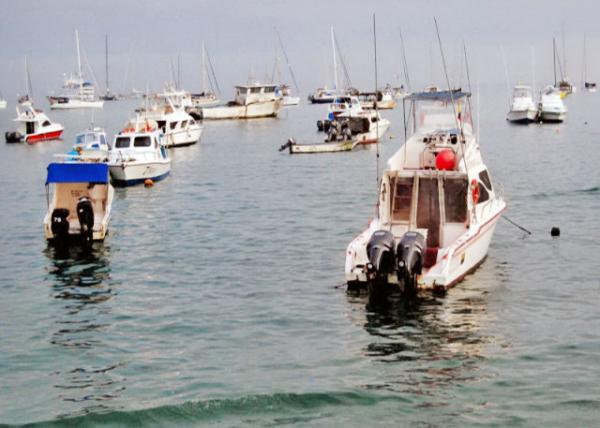 Artisan Fishery, Particularly Good for Marlin Fishing w/ Productive Deep-wWter Drops Accessible Offshore Artisan Fishery, Particularly Good for Marlin Fishing w/ Productive Deep-wWter Drops Accessible Offshore
(手工渔业·特别适合钓马林鱼,近海有丰富的深水水域) 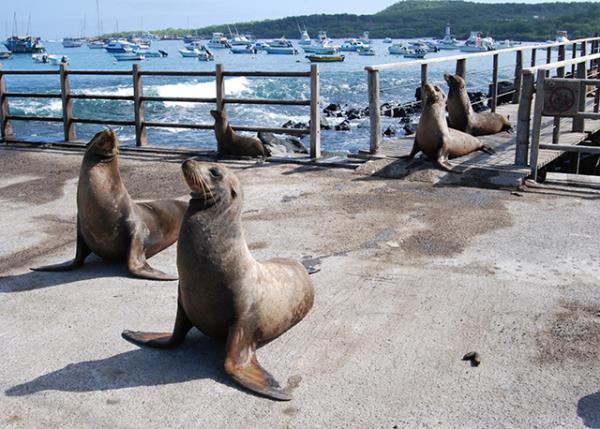 Galapagos Sea Lions Waddling onto Malecón San Cristobal Galapagos Sea Lions Waddling onto Malecón San Cristobal
(巨龟岛海狮·蹒跚地走向圣克里斯托瓦尔河畔马雷贡“海滨长廊”) 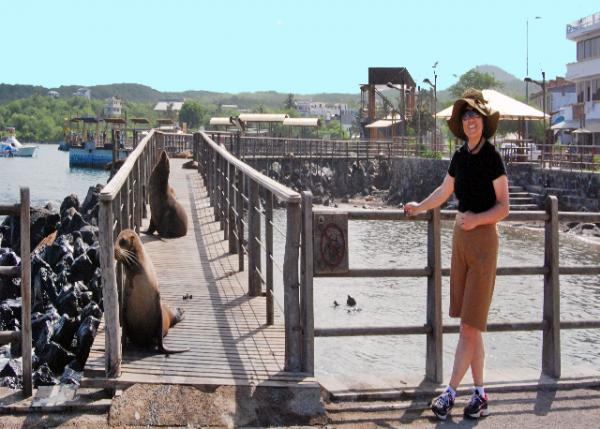 Galapagos Sea Lions Parading across the Boardwalk @ Puerto Baquerizo Moreno Galapagos Sea Lions Parading across the Boardwalk @ Puerto Baquerizo Moreno
(巴克里索·莫雷诺港——巨龟岛海狮游行穿过木板路 04-05-2013) 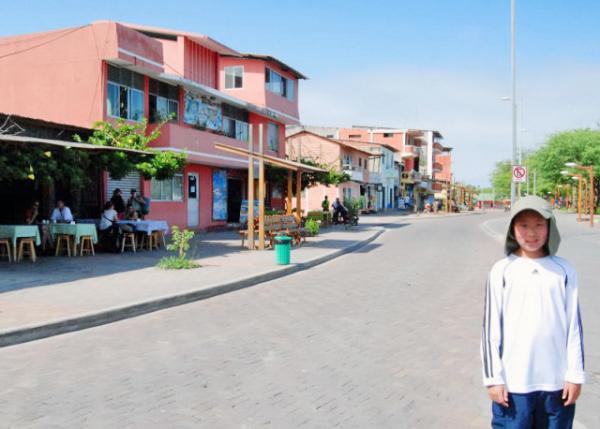 Baquerizo Moreno Town Founded in the Mid-1800s Baquerizo Moreno Town Founded in the Mid-1800s
(巴克里索莫雷诺港镇·始建于19世纪中叶 04-05-2013)  Hiking toward Frigatebird Hill Hiking toward Frigatebird Hill
(向军舰鸟山挺进 04-05-2013) 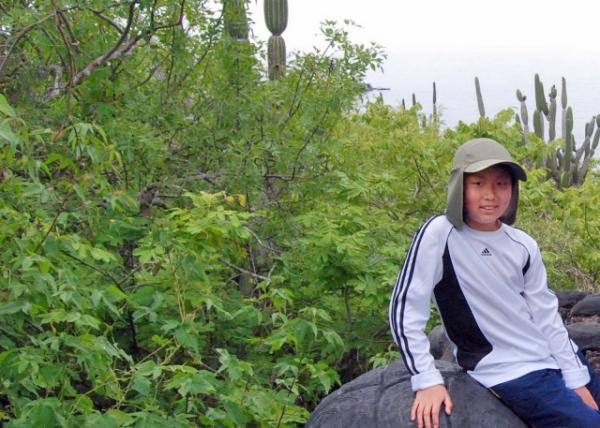 Castillo Shrub Sufferign Cladoptosis & Being a Source of Rubber Castillo Shrub Sufferign Cladoptosis & Being a Source of Rubber
(城堡灌木·患有枝状枯萎病和作为橡胶的来源 04-05-2013) 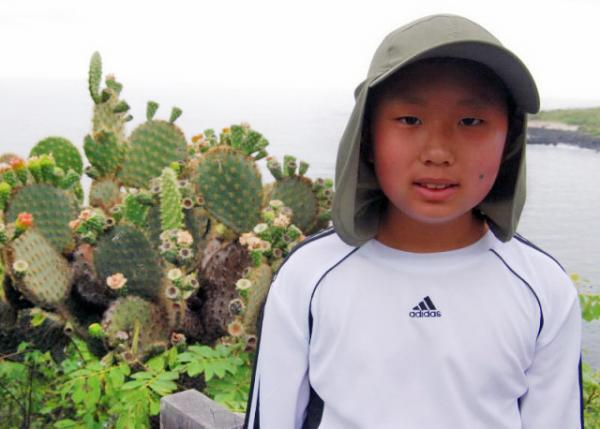 Prickly Pear Forest (仙人果林 04-05-2013) Prickly Pear Forest (仙人果林 04-05-2013)
 Liana Tree, a Long-Stemmed Woody Vine Liana Tree, a Long-Stemmed Woody Vine
(藤本树·长茎木质藤本植物 04-05-2013)  War Cannon Protecting a Vital International Shipping Route War Cannon Protecting a Vital International Shipping Route
(榴弹炮·保护重要的国际航运路线 04-05-2013) 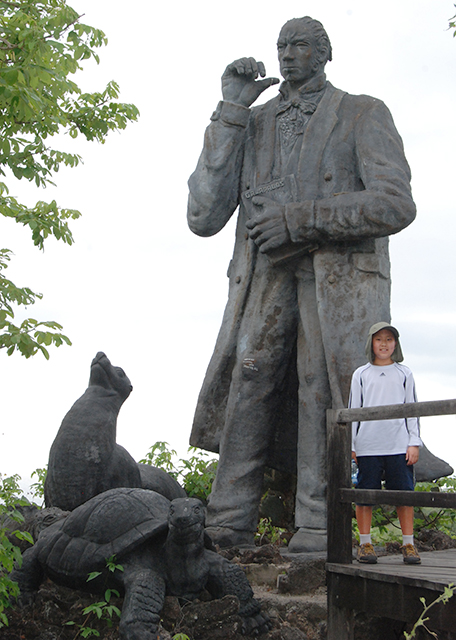
Darwin Sculpture Commemorating His 1st Landing and Groundbreaking Research on the Islands' Unique Biodiversity (达尔文雕像·纪念其首次登陆和对岛屿独特生物多样化的开创性研究 04-05-2013)  Darwin Harbor, a Thriving Ecosystem w/ Diverse Marine Life Darwin Harbor, a Thriving Ecosystem w/ Diverse Marine Life
(达尔文港·拥有丰富多样海洋生物的繁荣生态系统 04-05-2013) 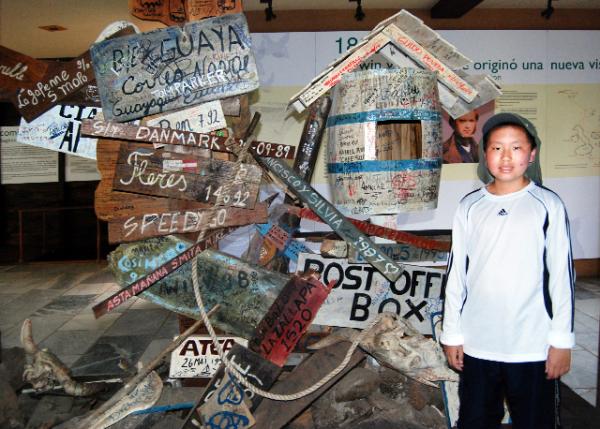 Interpretation Ctr, a Coverage of the Islands' History, Geology, Unique Wildlife, & Conservation Efforts Interpretation Ctr, a Coverage of the Islands' History, Geology, Unique Wildlife, & Conservation Efforts
(展示中心·涵盖岛屿的历史、地质、独特的野生动物和保护工作等内容 04-05-2013) 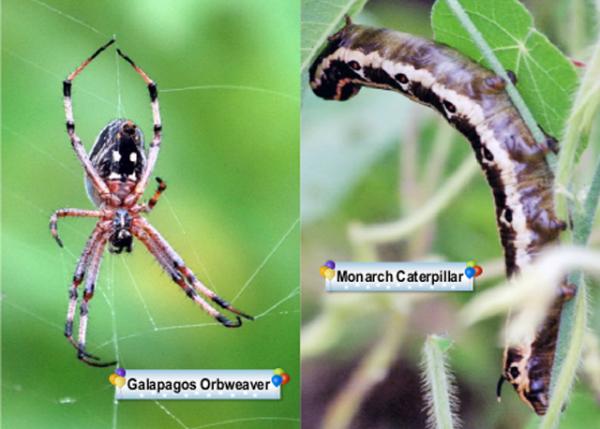 巨龟岛西斑圆蛛、斑蝶毛毛虫 巨龟岛西斑圆蛛、斑蝶毛毛虫
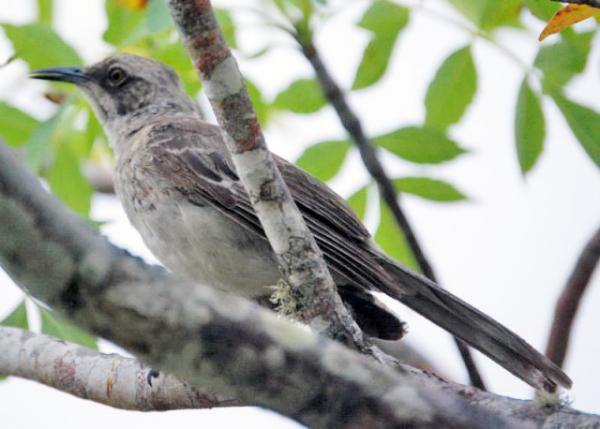 San Cristobal Mockingbird (圣克里斯托瓦尔仿生鸟) San Cristobal Mockingbird (圣克里斯托瓦尔仿生鸟)
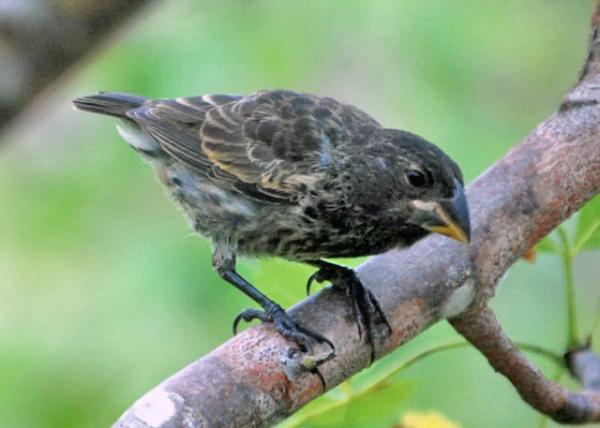 Large Ground Finch, the Largest of Darwin's Finches, Both in Overall Size & Beak Size Large Ground Finch, the Largest of Darwin's Finches, Both in Overall Size & Beak Size
(大嘴地雀·达尔文雀中体型最大、 喙部最大的雀类)
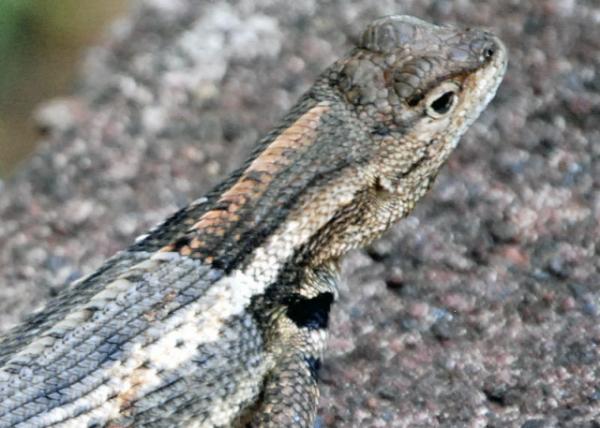 Galápagos Lava Lizard Capable of Tail Detachment as a Defense Mechanism Galápagos Lava Lizard Capable of Tail Detachment as a Defense Mechanism
(加拉帕戈斯熔岩蜥·具有断尾求生防御机制) 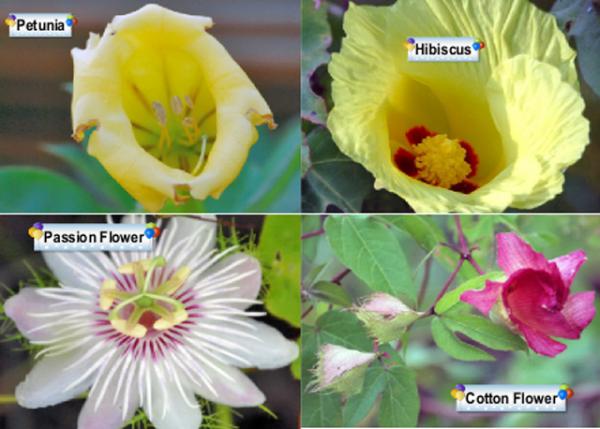 矮牵牛、木槿、西番莲、木棉花 矮牵牛、木槿、西番莲、木棉花

牵牛花、野生棉铃、圣诞耳蕨、早熟禾 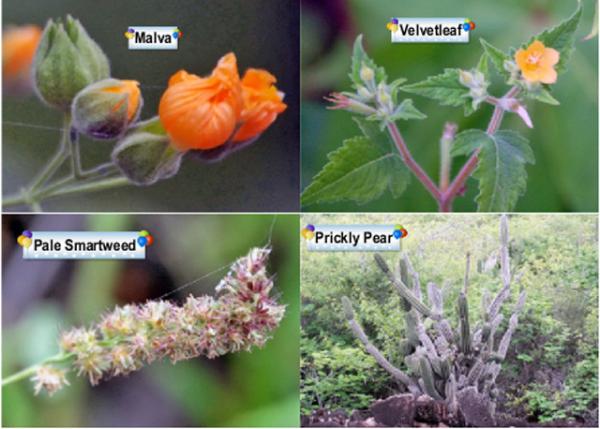 锦葵、苘麻、白花蛇舌草、仙人掌 锦葵、苘麻、白花蛇舌草、仙人掌
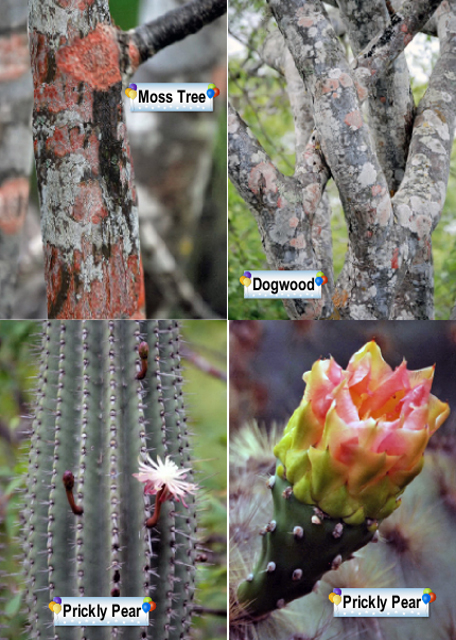
苔藓树、地衣树、仙人掌、仙人掌花 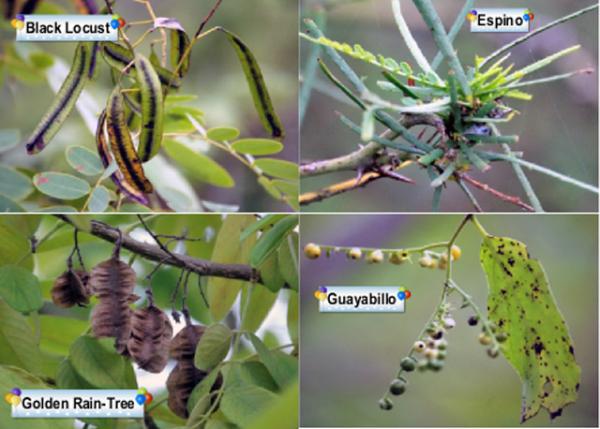 黑刺槐、单子山楂、金雨树、木瓜树 黑刺槐、单子山楂、金雨树、木瓜树
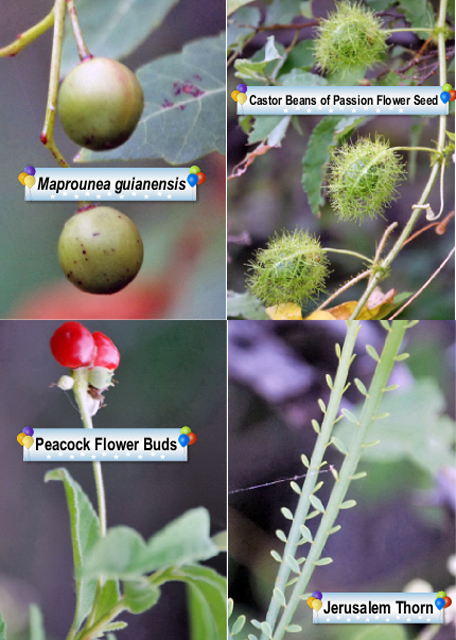
大戟科果、蓖麻豆、红蝴蝶花蕊、耶路撒冷刺
Crosslinks(相关博文):
2013: San Critobal's Kicker Rock/Witch Hill(巨龟群岛睡狮岩女巫岭)
2013: N.Seymour Is, Birdwatch in Galapagos(巨龟群岛北西摩岛·观鸟) 2013: St Cruz's Bachas Beach, Galapagos(巨龟群岛圣克鲁斯岛·巴查斯海滩) 2013: Bartolome Is Pinnacled in Galapagos(巨龟群岛巴托洛梅岛·尖峰岩) 2013: Santiego's Sullivan Bay, Galapagos(巨龟群岛圣地亚哥岛·苏利文湾) 2013: Isabella Is, the Largest & Wildest(伊莎贝拉岛·巨龟群岛最大最野) 2013: Rabida Is w/ Red Beaches, Galapagos(巨龟群岛拉比达岛·红沙滩) 2013: Santiego's James Bay, Galapagos(巨龟群岛圣地亚哥岛·詹姆斯湾) 2013: Baltra & Daphine Is, Galapagos(巨龟群岛巴尔特拉岛和达芙妮岛) Ecuador(出游厄瓜多尔)
South America(漂流南美洲) 小学四年级(4th Grade) |
